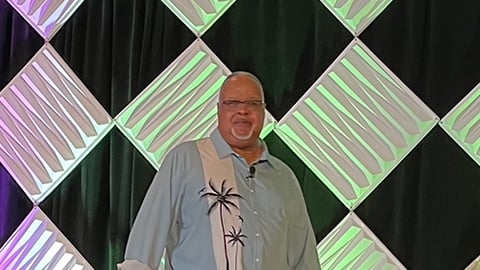What's New in Supermarket Shelf Technology
Grocers large and small are constantly looking for innovative ways to serve customers and enhance the shopping experience. In-store fixturing is increasingly playing a role in that endeavor, and adding technology to the mix is proving to be a boon for retailers.
When it comes to fixtures, looks are still important, but flexibility, greater interactivity and further benefits are also paramount. Retailers are finding ways to create a perfect balance between form and functionality, while also using what was once a simple fixture to earn additional revenue via retail media opportunities.
[Read more: "Will Grocers, CPGs Help Banks Ride $100B Retail Media Wave?"]
Opening the Door to Opportunity
One of the ways that grocers have added technology to fixtures is through the use of screens, which can sometimes create additional revenue opportunities, on everything from cooler doors to end caps. For instance, San Antonio-based Vericast recently collaborated with Intel, based in Santa Clara, Calif., to design, deploy and test a new in-store retail media network that features advertisements on digital displays and beverage cooler screens.
Further, Chicago-based Cooler Screens has expanded its fixture technology beyond the cooler aisle to additional areas of the store, including end caps, checkout lane coolers and pharmacy screens. The company’s technology can be integrated by retailers — and activated by brands and marketers — to offer targeted and relevant advertising while also enhancing the shopping experience for customers.
Following a three-year pilot, The Kroger Co. is expanding its partnership with Cooler Screens, bringing smart screens into 500 of the Cincinnati-based retailer’s stores across the United States. Cara Pratt, SVP at Kroger Precision Marketing, says the company brings “the best of digital experiences directly into our retail stores while integrating with our 84.51° data science platform to create an engaging and valuable experience for our customers, associates and brands.”
Putting Shelf Technology Into Play
The shelf edge has proved to be another important piece of the puzzle when advancing both fixtures and technology. Loop, from Durham, N.C.-based The Looma Project, for example, is offering a tech-forward, immersive product experience at the shelf. According to Chief Creative Director Ned Brown, Loop is a network of smart tablets installed in grocery stores — including Harris Teeter, Lowes Foods, H-E-B and Schnuck Markets — to connect shoppers to the people who made their products via authentic storytelling or education.
Not only does Loop help drive loyalty by enhancing the shopping experience for customers, but it also offers retailers the opportunity to drive both sales and incremental retail media revenue.
Additionally, southwest Ohio independent grocer Dorothy Lane Market (DLM) is ramping up its technology stack with the addition of electronic shelf labels and signage from Nanterre, France-based SES-imagotag. The Dayton-based independent retailer, which began deploying electronic shelf labels in its center store operations late last year, is currently working to expand the labels to the rest of its shelves and product displays in its perishable departments.
[Read more: "EXCLUSIVE: Dorothy Lane Market Streamlines Operations With Shelf-Edge Technology"]
DLM uses the technology in a way that allows for tags to be automatically adjusted at all three of its stores when price changes come through. Patrick Arnold, DLM’s VP of IT and marketing, says that being able to initiate price changes electronically, and from a central location, has amounted to huge labor savings, products that are always priced correctly and a nearly immediate fix to the grocer’s gross margins.
Advances in Flexibility
While technology is creating new opportunities in fixturing, incorporating mobile and plug-in fixtures can also be a solid step that allows retailers to be flexible and nimble in their merchandising, according to Bernhard Schweitzer, CEO and owner of Schweitzer, a European shopfitting and design firm.
“Plug-in fixtures benefit not only consumers in addressing their changing needs, but also retailers, which save money and conserve energy over the long term, due to the savings associated with renovations as needed throughout the lifecycle of a store,” Schweitzer wrote in a recent article for Progressive Grocer. “With the trend toward smaller stores, the implementation of plug-in fixtures for the whole store or for single department renovations is the easiest and smartest option available right now.”
Further, Schweitzer asserts that plug-in systems can be moved or maintained by non-engineers, which results in layout changes that can be completed in a relatively short timeframe.







